|
66. Polyommatus bellargus (Rottemburg, 1775) / Adonis blue / Lycaenidae – Polyommatinae
NL: adonisblauwtje / D: Himmelblauer Bläuling / F: azuré blue celeste, bel argus
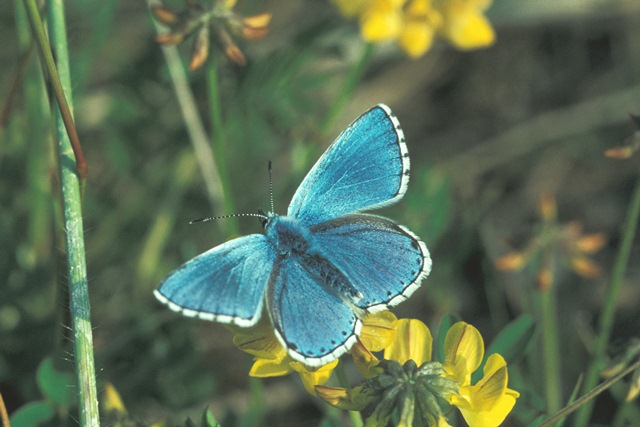 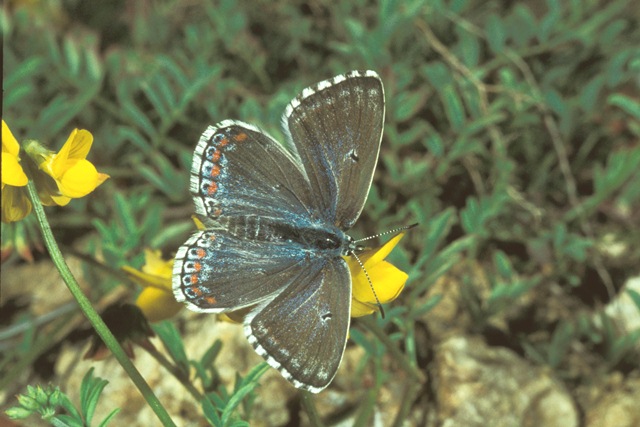 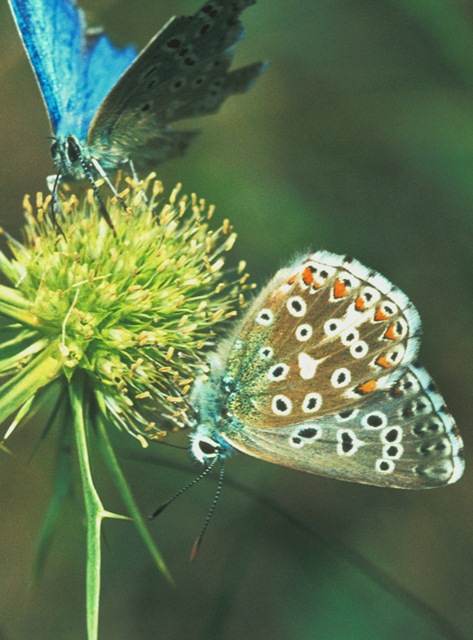
Photographs: Frits Bink ©.
Small, wing length 16 (14-17) mm. The species occurs today in the Benelux only as a vagrant, though it was known previously from several localities in the south of Wallonia.
Butterfly is on the wing from end-April until mid-September and peaks end-May and early-September. It is known from maritime to mild continental climates, amplitude 6 to 14. Required heat sum for two generations is 700°d and maximum tolerated 2000°d, corresponding climate windows 23 and 38 weeks.
The Adonis blue often shares its habitat with the closely related chalkhill blue (Polyommatus coridon). In August the species are synchronic, whereas only the former is present in early summer.
In England the populations had declined seriously until 1980, when only 70 or 80 colonies were left; however better management of the chalk grassland very much improved the situation and by 1990 there were about 250 colonies. The rapid decline was caused by lack of grazing activity by rabbits, which had been largely wiped out by myxomatosis allowing the vegetation to grow too tall and unsuitable for this blue. (Asher et al. 200: 168-171).
Ecological characteristics
Behaviour over time
Overwintering: small larva in first or second instar on the leaf of the host-plant.
Reproduction: oviposition starts after 6-8 days when the body contains 121 (104-138) eggs, estimated production 1.7 times as much.
Larval feeding periods: summer brood 46 (42-51) days from mid-June until early-August, overwintering generation in autumn 20 (10-30) days from end-August until mid-October and in next spring 58 (40-75) days from end-February until mid-May.
Generations: two.
Spreading of risk: not observed.
Life cycle: egg 16 (7-28) days; larva summer brood 6 weeks, overwintering generation 30-34 weeks; pupa 14 (11-19) days.
Life span of adult: long, 4 weeks.
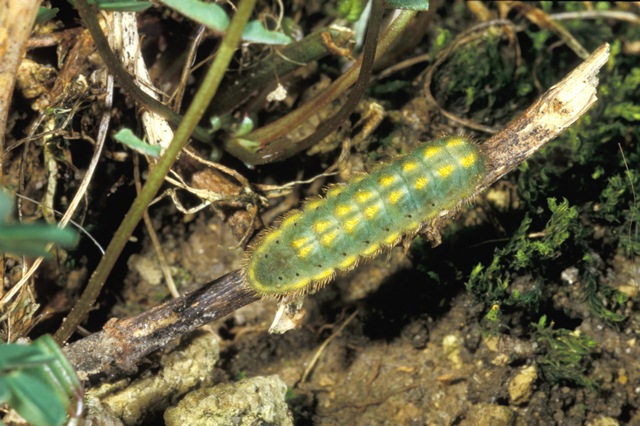 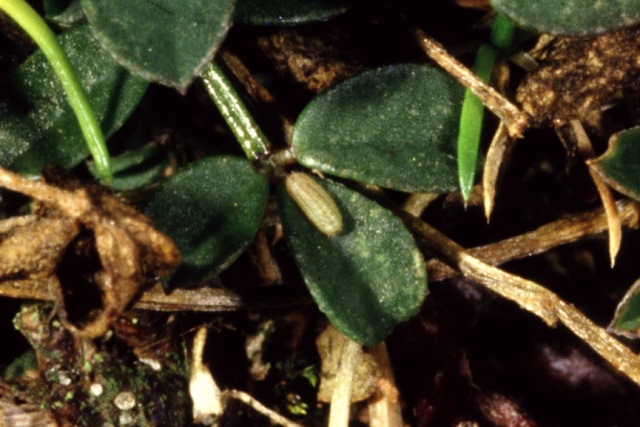
Photographs: Frits Bink ©.
Behaviour in space
From stay-at-home to migrant: stay-at-home, spatial requirement modest.
Finding a mate: male perches, patrols and joins congregations at drinking places and roosts.
Orientation in the landscape: open field with mixed short and tall vegetation.
Oviposition: usually on the upperside of a leaf.
Defence
Threats from other organisms: larvae get protection from invertebrate predators and parasites by attending ants.
Myrmecophily: strong, full array of ant-attracting and appeasing organs present, most of the time attended by ants and pupating larvae are tolerated inside an ant nest.
Threats from the environment: adverse effects from tall vegetation inhibiting the growth of the host-plant due to lack of light penetration.
Feeding habits
Adult: nectar of all kinds of flowers, butterflies in spring like the flowers of their own host, those in late summer like flowers of field eryngo (Eryngium campestre).
Larva: when nearly fully grown it stays, usually near the host plant, in the litter layer.
Larval foodplants
Plant species: Fabaceae, Hippocrepis comosa, also sometimes Securigera varia, but only when prostate in growth.
Journal
Rearing experiments:
1. Based on specimens from Dun-sur-Meuse, Lorraine, France:
12 June 1984: butterflies captured.
14/15 June: eggs laid.
25 June: eggs hatched.
4 July: larvae first instar, mined and made blotches on the leaves.
18 July: larvae in third instar, there were both yellow and dark green morphs.
21 July: 34 larvae were feeding, biggest one in L4, four in L2 and yellow.
31 July: biggest larvae nearly fully grown, hid under stones during the day.
7 August: 3 pupae present.
12 August: nearly all pupated.
20 August: first adult appeared.
2. Based on specimens from Kalmünz, Germany, provided by Sepp Weidemann:
7 October 1985: five eggs collected in the field.
20 October: temperature raised to 30°C and three eggs hatched.
4 November: no larvae visible, only their tiny feeding holes in the leaf.
Overwintered outdoors.
24 January 1986: pot with host plant taken indoors.
2 February: feeding activity observed.
13 February: as soon as the temperature reached 24°C, the larva started eating.
27 February: larva in moult.
28 March: larva appeared to be in L3.
23 April: larva in L4, 5.5 mm in length.
24 April: pot was exposed to a severe night frost, this appeared not to hurt the larvae.
15 April: larva lost.
Table 66-1. Results of dissections

Table 66-2. Collection and observation localities
D, Kallmünz 49° 09’ 53”N – 11° 56’ 41”E; 17 August 1989.
F, Averdon 47° 39’ 38”N – 1° 17’ 23”E; 30 August 1982.
F, la Bruyère 45° 39’ 01”N – 5° 38’ 09”E; 25 August 1984.
F, Cap Blanc-Nez 50° 55’ 29”N – 1° 42’ 30”E; 1 September 1999, 10 June 2000.
F, Lorraine, Dieue-sur Meuse 49° 05’ 11”N – 5° 27’ 25”E; 19 August 1984.
F, Lorraine, Dun-sur-Meuse, 250 m, 49° 24’ 13”N – 5° 15’ 14”E; 12 June 1984.
F, Lorraine, Lion-devant-Dun, 300 m, 49° 23’ 40”N – 5° 14’ 03”E; 12 June 1984.
F, Lorraine, Rupt devant Saint-Mihiel, 280 m, 48° 53’ 01”N – 5° 24’ 10”E; 28 June 2006.
F, Vosges, Bollenberg, 363 m, 47° 56’ 54”N – 7° 15’21”E; 25 July 1983, 11 June 1984.
GB, Dorking 51° 14’ 32”N - 0° 21’ 13”W; 23 July 1981.
Fig. 66-1. Polyommatus bellargus, phenogram adapted from Fichefet et al. 2008: 135.

Fig. 66-2. Polyommatus bellargus, habitat characteristics.
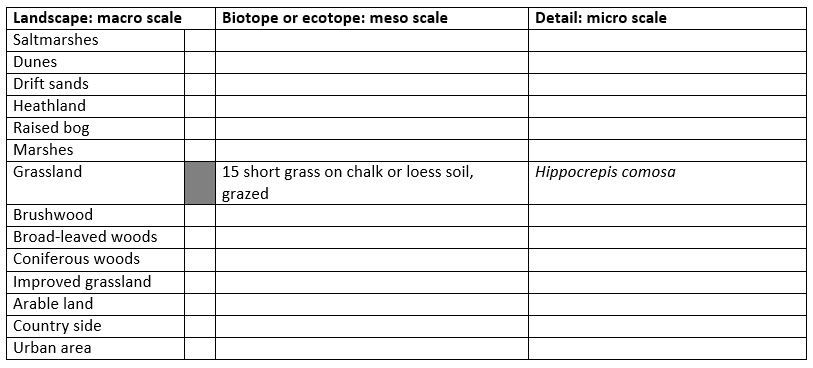
Fig. 66-3. Polyommatus bellargus, climate matrix, heat-sums 700 (2nd generation) -2000°d.
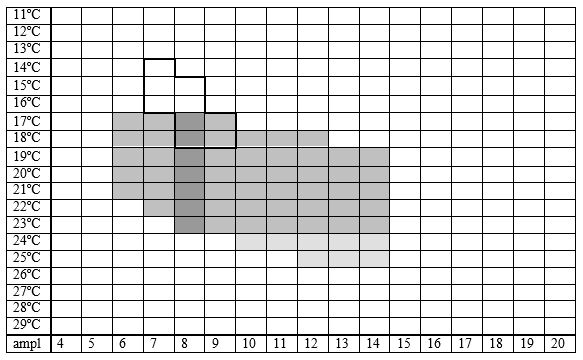
|










